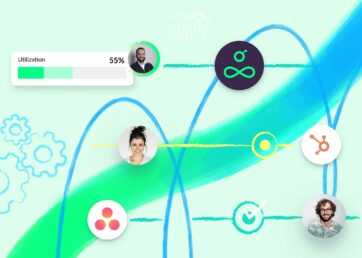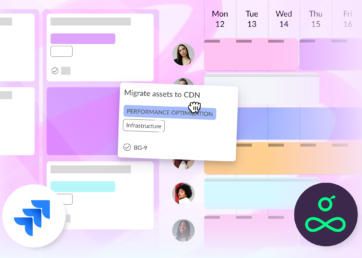We do capacity planning all day, every day. But, without capacity planning tools to gauge how many hours of employee time you have available and whether it’s enough to meet the requirements of your projects, your project timelines and budgets can easily crumble.
You could either end up with too many staff and not enough work, or your team may be wildly overstretched—leading to missed deadlines, low-quality output, and ultimately a high turnover of staff.
Effective capacity planning is key to getting projects over the finish line on time and to ensuring project managers can make realistic plans for the future. It tells you exactly what work you can take on without causing your team to burn out or cut corners.
In this article 📖
Compare different capacity planning tools before you choose
1. Resource Guru
Resource Guru is the solution to master your team’s time. It helps you put an end to over-allocated resources and remove the friction from resource management, so you can keep your projects running smoothly.
And it’s not just for scheduling people; this capacity planning software also allows you to manage your non-human resources, such as meeting rooms and equipment.
Key features:
- Clash management, overtime bookings, and waiting lists
- Tentative scheduling
- Leave management
- Timesheets
- Project forecasting and resource utilization reports
- People and equipment scheduling
- Meeting room booking system
Resource Guru handles complex scheduling needs with a simple user interface that includes custom availability for individual resources, time zones, time off, and tentative booking requests.
With its clash management engine, this is one of the few tools on the market that cares about people and their time.
Pricing
Resource management software can be incredibly expensive, but with prices from just $4.16/month per person, Resource Guru offers an affordable solution without compromising on features or quality.

The #1 scheduling and time tracking tool trusted by thousands of project teams
Join thousands of project managers who have made scheduling a breeze.
2. Mavenlink
Mavenlink offers cloud-based project management in the professional services sector. It is a highly customizable tool that requires some configuration to get right. But if the learning curve and setup time isn’t something to put you off, this app will let you manage everything from resources to projects and operations.
Mavenlink is best suited for teams that are really data-driven and that need a one-stop-shop solution.
Key features:
- Capacity forecasting
- Resource planning
- Budget planning
- Skill management
- Scenario planning
Pricing
Mavenlink suggests that their pricing is tailored for each customer, so you won’t easily find their prices listed online. When speaking with their sales team, I was told the cheapest plan on offer started at $45/month per user, but after digging around to find a free trial signup form, I saw some small print that suggested their Teams plan starts at $19/month for 5 users. You’ll need to arrange a call with their sales team to get a clear picture of what’s on offer to you, and at what cost.
3. Teamup
Teamup is a calendar tool that’s designed to simplify team scheduling and event planning. With Teamup you can create colour-coded calendars and sub-calendars that give you different ways to organize your people, resources, and activities. More advanced users can make use of custom event fields, views, and permissions to adapt their calendars for the specific needs of their team.
Teamup offers a simple way to organize your team’s time or an event itinerary, but without features that measure and report on team capacity and utilization, it’s capacity planning capabilities are limited.
Key features:
- Calendar management
- Team scheduling
- Equipment management
- Event itineraries
Pricing
Teamup offers a free version of their product with limited functionality. But if you want to make use of most of Teamup’s features, you’ll need to pay between $8 and $80 per month. There’s also the option for a free trial but you’ll have to be quick testing it out as it only lasts 3 days.
4. Spreadsheets (Excel and Google Sheets)
Spreadsheets can be used as an alternative to capacity planning software. You start with a blank slate and build a custom solution, specific to your needs.
However, maintaining spreadsheets can be a lot of manual work, and this increases the risk of human error. Besides, it can be a time-sucker when you need to complete a huge task like managing resources and capacity. They can also be confusing and not the most beautiful things to look at, which, let’s be honest, can make the process of using them far from enjoyable.
Key features:
- Highly versatile
- Bespoke solution
- Templates available online
Pricing
Google Sheets is free, and most businesses will already have access to a spreadsheet program as part of their office suite. The most popular are Microsoft Office 365, which ranges in price from $5–$20/user per month, and Google Workspace, which ranges in price from $6–$18/user per month.
5. Planview Projectplace
Planview is an enterprise portfolio and work management solution with a focus on transforming strategy to delivery. So you can expect to find features for project planning, milestone tracking, and document management, alongside analytics and integrations.
For demand forecasting and capacity planning, you’ll be looking at Planview’s Projectplace Project Management software, which also provides key project management and task management tools such as Gantt charts, document hosting, and Kanban boards.
Key features:
- Gantt charts
- Kanban boards
- Document collaboration
- Workload view
- Workspace overview
Pricing
Planview Projectplace offers just one per-user pricing plan, starting at $29.00 per feature, per month. Their main offering includes Kanban boards and Gantt charts, but they also have features to facilitate collaborative document management and workload management.
What is capacity planning?
Capacity planning is the process of comparing your employees’ available work hours with the needs of a project so that you have a realistic picture of the goals that can be accomplished with your given resources and schedule.
If your capacity planning points to a shortfall of resources, you can allocate more people to the project or hire freelancers. If you foresee excess capacity, you can take people off the project and allocate them where they will be better utilized.
Capacity planning keeps projects on track and leads to happier employees
Capacity planning helps you lock in your iron triangle—the one that keeps scope, budget, and timeline in balance— to set your project up for success. It boosts project efficiency by using employee hours at an optimum level to make sure no one is over or underutilized.
More importantly, capacity planning acknowledges that your resources are human. Employees do their best work when they are calm and motivated rather than when they have to hammer away at a task under the pressure of a looming deadline. They need slack time at work to be creative and to feel a sense of fulfilment. To achieve this, the brain needs a break with less intense tasks and occasional downtime.
With capacity planning, you don’t just account for vacation days. You proactively build buffer time into an employee’s daily schedule (for example, you schedule an employee for 6 hours in an 8-hour workday) so that they remain mentally fit and energized to do quality work and meet deadlines without burning out.
Team members could use their spare time to answer emails, communicate progress about the project, or simply read an article and feel refreshed. This sense of happiness and productivity is invaluable in maintaining a high standard for your deliverables and keeping your project on track.


“With the Guru software we get better insights into our daily planning. Great tool & easy to use.”
Capacity planning is difficult (and inaccurate) when you rely on spreadsheets
Capacity planning has traditionally been relegated to spreadsheets where project managers manually plug in numbers and availability. Spreadsheets are popular because they are readily available and highly customisable, and most people can use them without any formal training.
But using spreadsheets for capacity planning is a time-consuming and intensive task, especially if you have to organize people with different skill sets from a large team and several different departments. Plus, spreadsheets aren’t usually real-time – they don’t automatically update or identify inter-dependencies between different data fields and inputs. Imagine feeding data into hundreds of rows and columns and then having to update or correct it when different aspects of a project change.
Plus, spreadsheets are difficult to scale to the size of your project, resulting in 88% of spreadsheets including at least one mistake. This happens when spreadsheets are used for purposes beyond their capabilities, like capacity planning.
Use capacity planning software for skillful project management
Unlike spreadsheets, capacity planning software allows you to assess the historical, current, and future utilization of your resources, so you can decide whether you need to adjust your capacity in order to meet demand and stay profitable.
A capacity planning tool will help you accurately answer these questions:
- How efficient is my resource allocation?
- How much free time do I have overall? In each team, department, or skill set?
- If I hire more people, how will this impact our long-term capacity?
Identify capacity planning tool features to fit your needs
Capacity planning doesn’t have to be complicated or painful. With the right tools and features, you have complete visibility into your resource allocation and can smoothly lead a project over the finish line. To get the right one, you need to know what you should be looking for in a capacity planning tool.
Project forecasting reports
A solid foundation for strategic capacity planning comes from accurate forecasting of a project’s needs. With the help of insightful reports from capacity planning software, you’ll be able to see the utilization of your team members over time, both as a whole and as individuals. You can use this insight to make data-driven decisions to cover your current project needs and sign new projects.
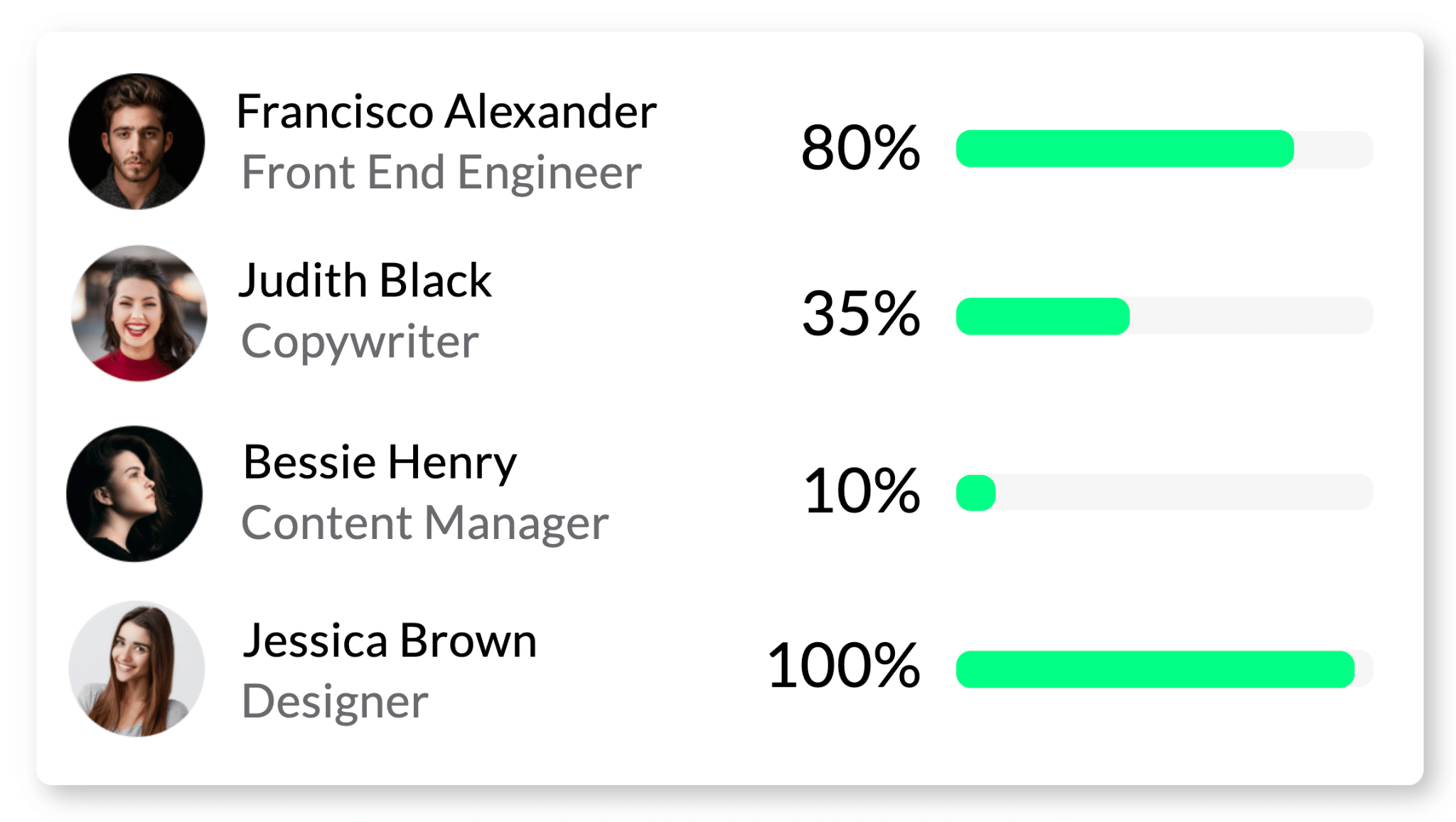
Customizable permissions
A flexible tool will offer granular permission settings, so you can invite colleagues into the platform and give them a real-time view of available capacity within a given period. Just as importantly, permissions allow managers to control the information people can see and edit.
This way, resources stay focused on their individual schedules and non-managers can’t alter project plans unexpectedly. This feature is also useful if you regularly work with and invite freelancers into a shared schedule. In this situation, you may want to limit how much they can see about other teams and projects in the company.
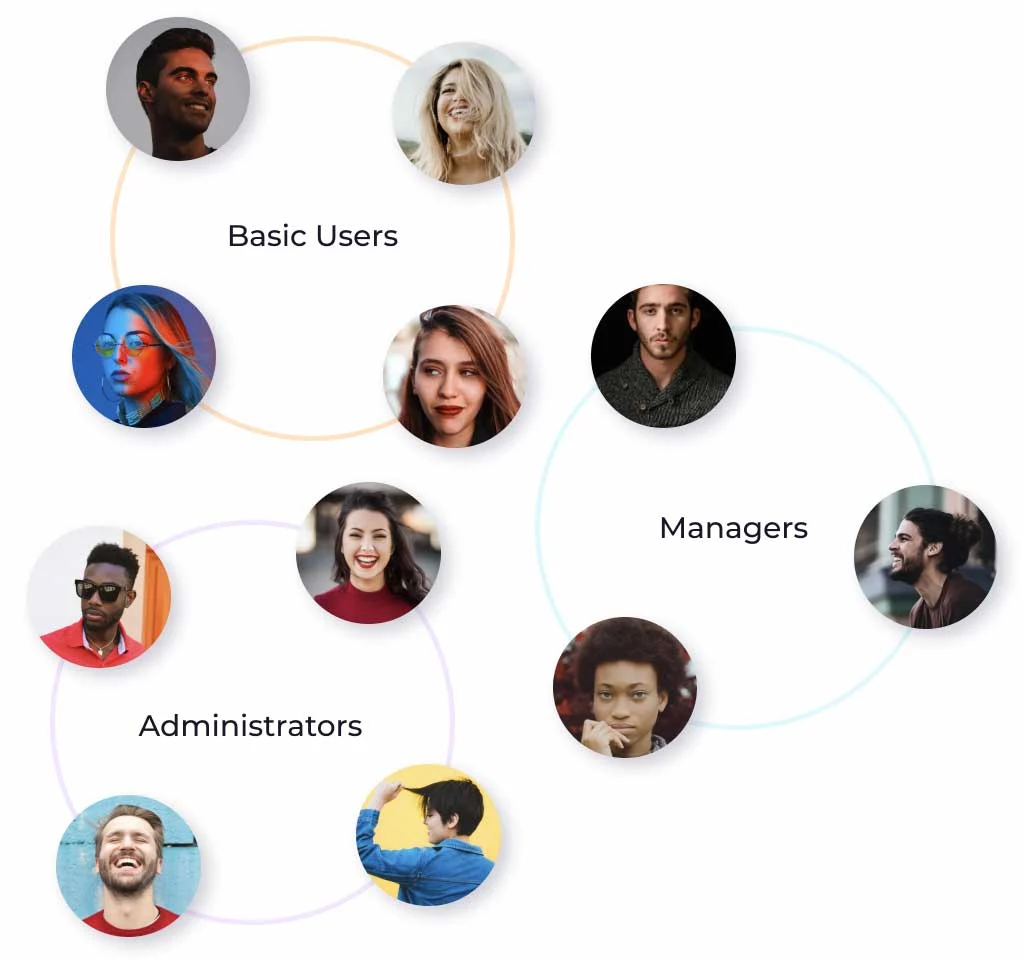
Resource scheduling
Consider your scheduling needs when choosing a capacity planning tool. Do you need to schedule multiple resources for the same bookings? Do you need to be able to accommodate schedule changes or make last-minute adjustments? Then you need a tool that’s flexible and lets you simply drag and drop, and even split bookings, to rebalance workloads.
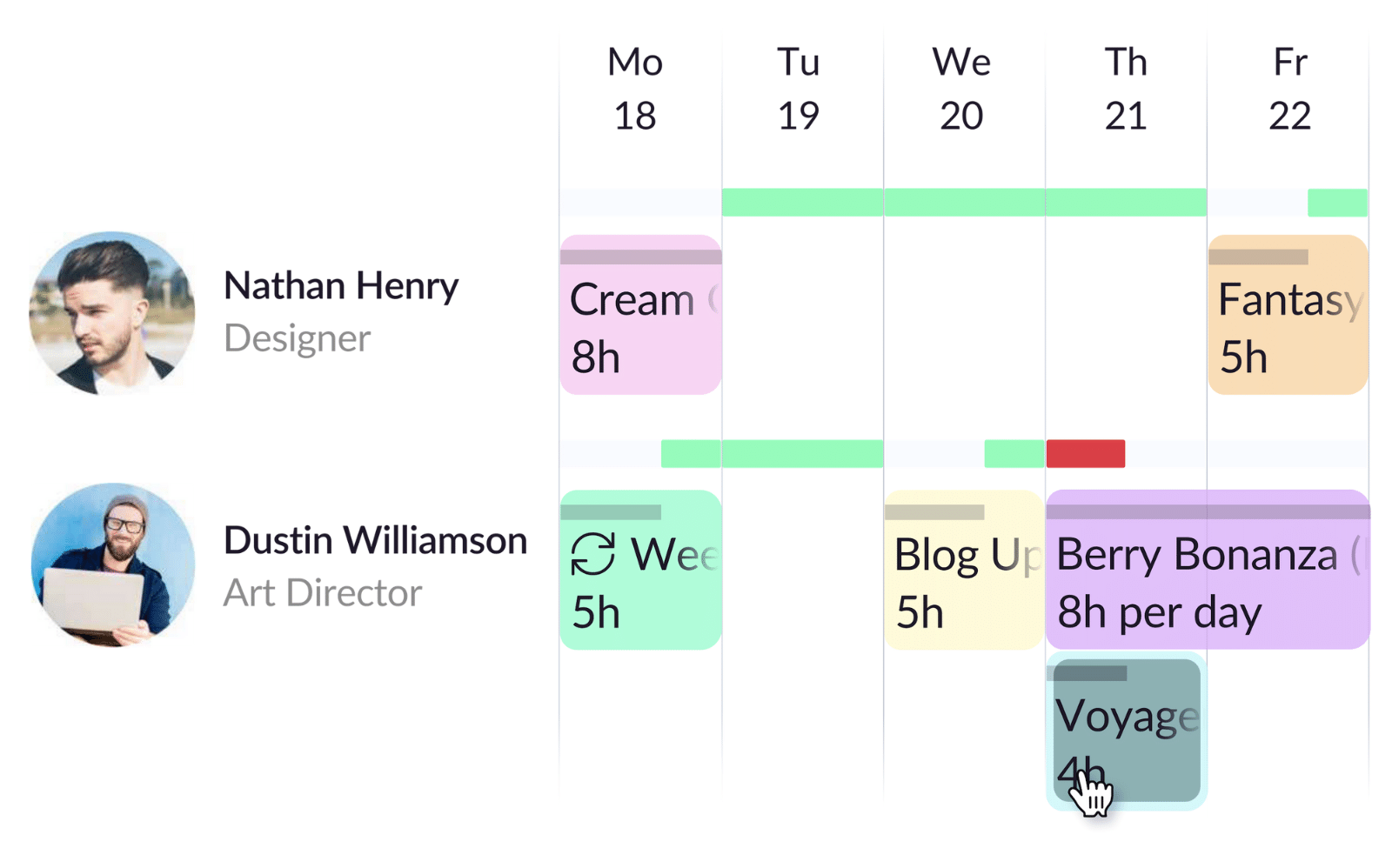
Clash management
This feature plays a significant role in capacity planning because it prevents you from overbooking your most important resource—your employees. You need a system that identifies clashes and lets you pencil in bookings, so you can manage overtime dynamically.
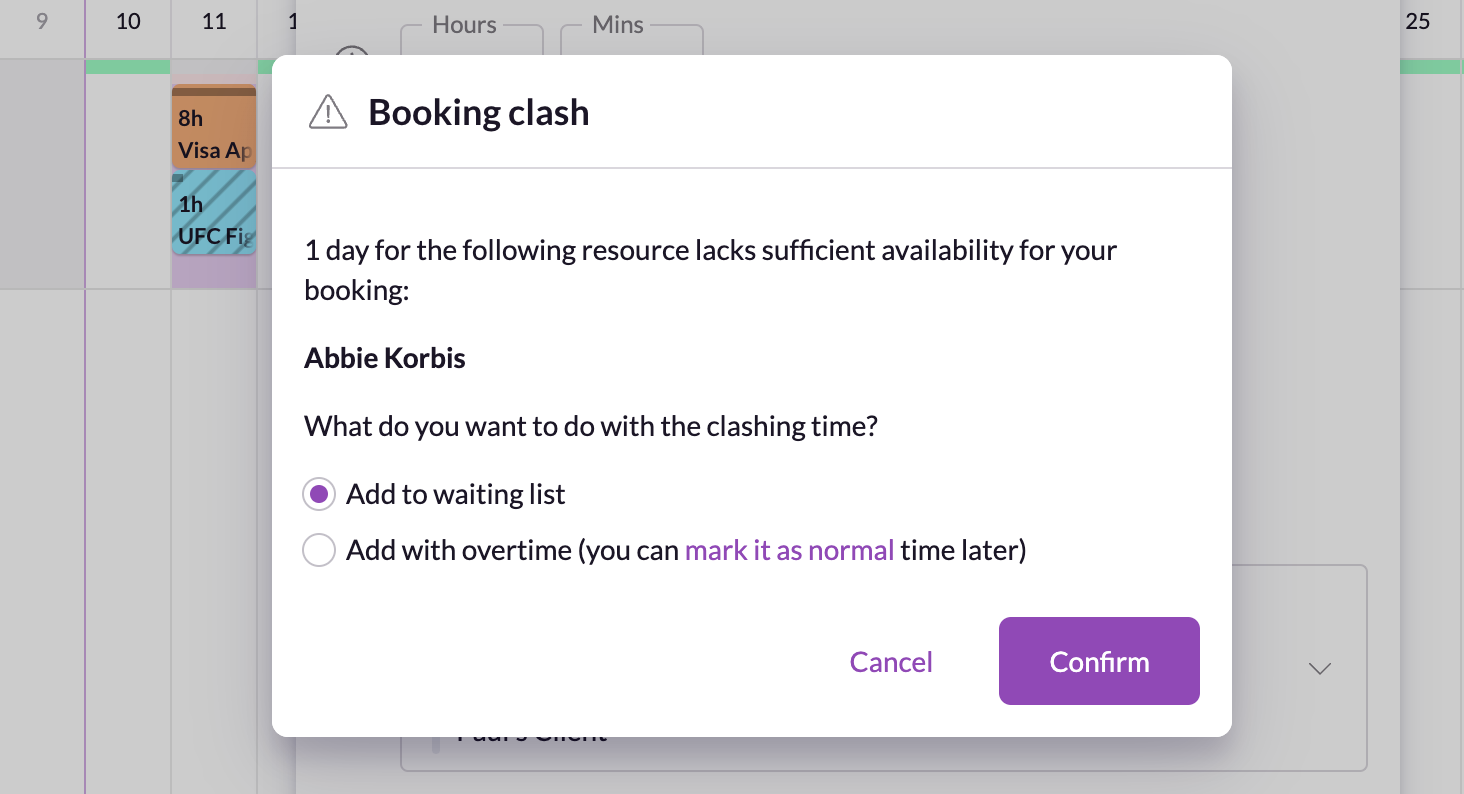
Leave management
Sick leave, personal days, and other types of downtime can have a sudden and unexpected impact on your capacity, so a tool that offers a leave management feature helps you stay in the loop. Daily time off emails, a staff holiday planner, and detailed reports of staff absences make your capacity planning process that much stronger.
![]()
Equipment management
Your employees often need specialized equipment to do their jobs, whether it’s meeting rooms, studios, or a pickup truck. On-site equipment use may have decreased during the COVID-19 pandemic, but the resurgence of hybrid work means that some of these needs are coming into play again. A tool that gives you a bird’s-eye view of equipment bookings is perfect to save time and get everyone the resources they need.
![]()
Time tracking
Time tracking in resource management plays a huge part in project profitability. That’s why you want a resource management tool that includes timesheets, so that you can stay on top of billable hours, optimize resource utilization, and forecast more accurately. Timesheets that are based on forecasted schedules provide an accurate overview of the week and leads to higher submission rates.

Resource Guru’s Bulk Log feature.

The #1 scheduling and time tracking tool trusted by thousands of project teams
Join thousands of project managers who have made scheduling a breeze.




